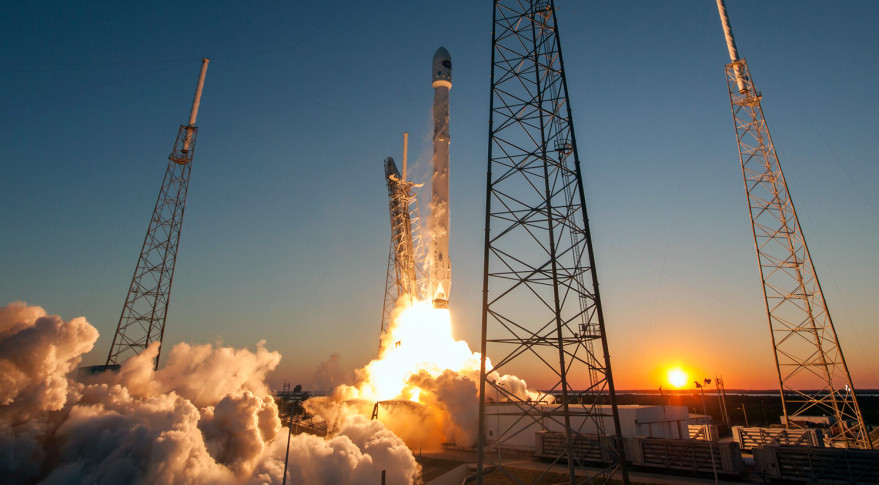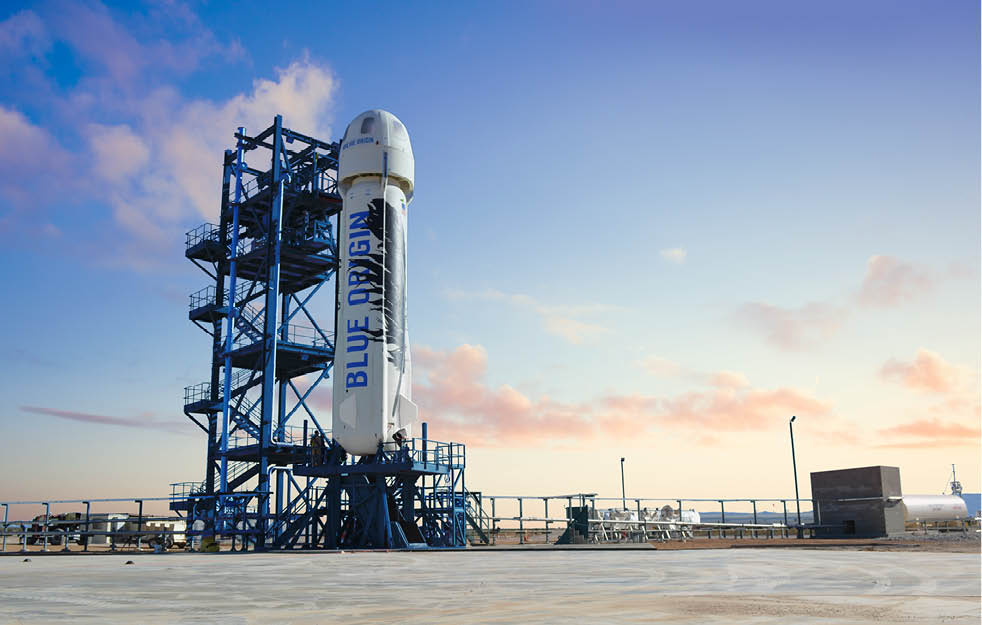
In this article, our sponsored student, Marcus Collier-Wright reviews the development of the space flight industry over the course of 2017.
2017 was a year of progress and ambition in the spaceflight industry, and one which further highlighted the increased involvement of private spaceflight. The number of exciting start-up space companies has continued to grow, while the larger players have reached important milestones. SpaceX successfully completed all 14 of the attempted landings of the Falcon 9, showing tremendous reliability for an idea which was considered outlandish only a few years ago. Even more significantly, one of these launches was performed with a first stage which had already flown and been recovered, marking the first ever instance of a primary launch vehicle being reused.
Meanwhile, Blue Origin’s own reusable spacecraft, New Shepard, successfully completed the maiden test flight of a new crew capsule in December. Unlike the Falcon 9, New Shepard will provide sub-orbital leisure flights and is one of the leading technologies for private space tourism. Although this concept has been around for a while (the Russian space authorities have flown several people to space as “tourists”), it looks like New Shepard may well be the first private commercialisation of space tourism. Unlike Virgin Galactic’s SpaceShipOne/Two, New Shepard is a self-contained vehicle which does not require another aircraft to lift it into position. The new crew capsule was designed in preparation for the first manned flights of the vehicle, possibly as early as this year, and we may even see the first paid flights before the end of the decade!

Credit: Blue Origin
Another theme of 2017 was the shifting focus of the industry back to human spaceflight beyond Earth orbit. Since the end of the Apollo program in 1972 no humans have flown beyond Low Earth Orbit. The days of extra-orbital human spaceflight were arguably the most exciting and captivating times in the spaceflight industry, and recent developments are reminiscent of the ambition and optimism of those times, but now with a new destination: Mars. This year, SpaceX further expanded its plans to fly the first humans to Mars, setting 2024 as a provisional date. Even the USA seem to have set their sights on the red planet, issuing “Space Policy Directive 1” to once again send humans to the Moon, as a precursor for the main goal of reaching Mars.
On a more nostalgic note, 2017 saw the end of Cassini-Huygens, one of the most pioneering missions in spaceflight history. In 2005, the Huygens probe, performed the first ever landing on the moon of another planet, and still remains the farthest from Earth landing ever completed. The mission came to an end in mid-September, with the Cassini orbiter plunging into Saturn’s atmosphere. There was still time this year for Cassini to provide one final insight into Saturn’s moons, as it detected molecular Hydrogen in plumes emanating from the moon Enceladus, suggesting life may be possible there.
Marcus Collier-Wright
(Featured image – A SpaceX Falcon 9 rocket launches from Cape Canaveral, Florida. Credit: SpaceX)
Capital International Staffing is a recruitment company specialising in placing candidates in technical engineering roles in the space and satellite sector. If you are looking for a space job in Europe, Capital can help.
Looking for a job in the space industry?
Check out our latest vacancies.

